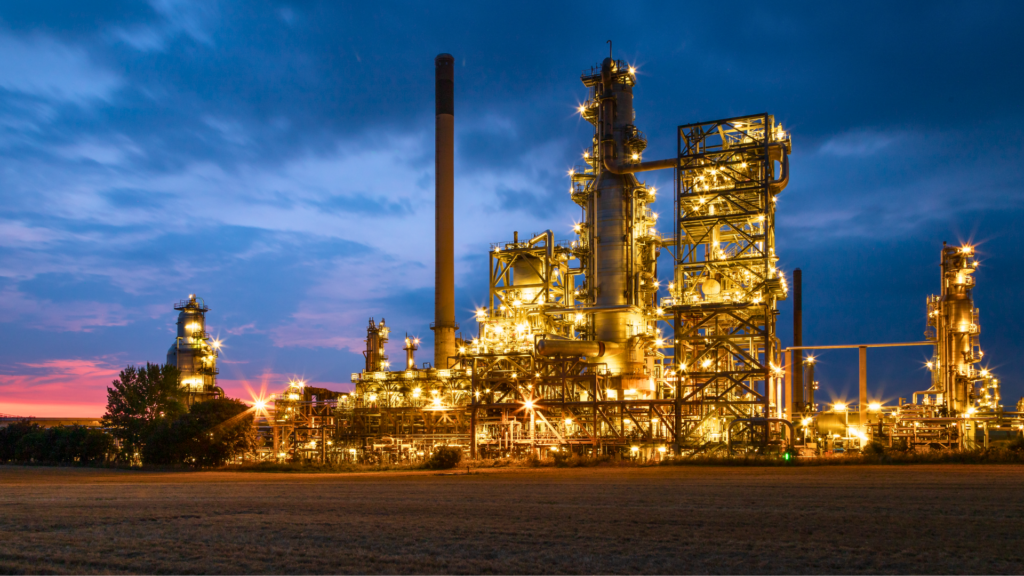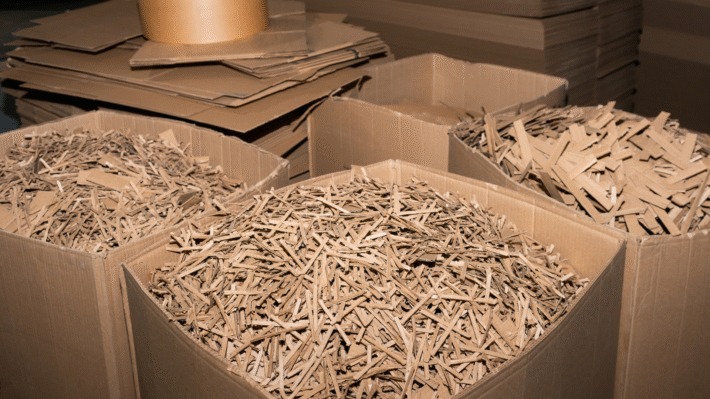Repurposing Petroleum Assets for Biomass Processing

Dust off those old petroleum assets and let’s infuse a breath of fresh air into them! Yes, you heard me right. We’re repurposing existing petroleum industry assets to convert biomass into valuable materials and chemicals — we’re talking about anything from bio-oils to sustainable aviation fuel! This remarkable transformation creates a whole new lease of life, leading us towards a more sustainable and bio-based economy. We’re going to delve into a series of intricate conversion methods – thermoplastic, biochemical, and even some sparky electrolysis. Along with that, we’ll discuss how we can repurpose refineries, pipelines, and more! This is not just a mere concept, but the beginning of a revolution in sustainable materials and chemicals. So buckle up as we embark on this green journey, your guide to reclaiming petroleum assets for a brighter future! 🌿
Repurposing Petroleum Assets for Biomass Processing
Let’s imagine for a moment a world where biomass, not petroleum, becomes the backbone of our global energy needs. A world where our economy thrives on the sustainable conversion of plants, trees, even waste materials into valuable fuels and chemicals. Sounds like a distant utopia? Not so fast! Let’s talk about how repurposing petroleum assets for biomass processing is turning this dream into reality.
The Importance of Repurposing
Benefits to the Environment
Rethinking how we use our existing petroleum resources to benefit the environment has never been more crucial. The buildup of greenhouse gasses and the burning of finite resources has been a critical concern over the last few decades. When we talk about repurposing petroleum assets for biomass, we’re referring to reducing the emission of harmful gasses into our atmosphere. Through sustainable sourcing and conversion of biomass, we can drastically decrease our carbon footprint and steer clear from harmful emissions.
Boosting Economic Growth
The economic implications of this transition are enormous. We’re talking about creating an industry potentially worth billions, if not trillions, in economic value. Repurposing petroleum assets provides an opportunity to tap into biomass’s enormous potential. This could not only drive economic growth but also create numerous green jobs across the global economic spectrum, hence giving a new life to the petroleum industry assets.
How to Transition Petroleum Assets
For this transition to become a reality, we need to focus on key aspects of petroleum assets, such as refineries, pipelines, and storage logistics.
Adapting Refineries
Think of petroleum refineries as giant industrial kitchens. Repurposing them for biomass processing means adapting these industrial kitchens to “cook” plant materials instead of crude oil. The aim is to convert biomass like bio-oils and triglycerides into renewable fuels. This involves processes like gasification, which turns biomass into fuels and chemicals, and pyrolysis, which produces bio-oils. These processes open gates to a host of renewable fuel options, including biofuels and sustainable aviation fuel (SAF), to name a few.
Using Pipelines for Biofuels
Once we have these biofuels, the challenge is to get them to the consumer. That’s where our existing pipeline system comes in. With minor modifications, these pipelines can be used to transport biofuels and bio-based chemicals. So rather than petroleum, it’s the green, eco-friendly biofuels running through our veins!
Storage and Logistics
To make sure these biofuels are available round the year, you need to store them. Existing petroleum storage facilities can be repurposed to stack up biomass-derived fuels. On top of that, we can use existing logistics and distribution networks to get the biofuels where they need to be, creating an intricate web of green, renewable fuel.
Thermochemical Conversion Methods
Let’s spark up a discussion about a hot topic: Thermochemical Conversion Methods. This fiery realm of scientific wizardry turns everyday materials, like agricultural waste, into something truly remarkable – energy. Picture this, a world where your old pizza boxes become fuel, turning your Friday night fun into a truly renewable experience. That’s the magic of Thermochemical Conversion.
Gasification and Pyrolysis
Alrighty, let’s get into the nitty-gritty and start with gasification and pyrolysis.
Turning Biomass into Syngas
Gasification is like the cool magic trick of the science world. You see, what gasification does is turn biomass – which can be stuff like agricultural waste or woody materials – into something called syngas, short for synthesis gas. What’s so special about syngas? Well, glad you asked. Syngas is a concoction of carbon monoxide and hydrogen that is used as a stepping-stone to making chemicals and fuels. Pretty neat, huh?
Producing Bio-Oil and Biochar
Next up, Pyrolysis. This is the process of heating biomass in the absence of oxygen. No, the biomass doesn’t suffocate; instead, it breaks down into a couple of really useful things. The first is bio-oil, a kind of liquid that can be made into biofuel. The second is biochar, a very carbon-rich material (hence the name) that is excellent for improving soil fertility. It’s heating with a purpose!
Advanced Processes
Alright, welcome to the advanced class! Buckle up because we’re heading into Hydrocracking and Fluid Catalytic Cracking territory.
Hydrotreating and Hydrocracking
Hydrotreating and Hydrocracking are where we upgrade bio-oils and triglycerides – which are a type of fat found in vegetable oils and animal fats – into renewable fuels. It’s kind of like giving our biomass a promotion, from just lounging around to becoming a vital player in our quest for renewable fuel sources.
Fluid Catalytic Cracking
Next, we’re shifting gears to Fluid Catalytic Cracking. Now, this isn’t about having a crack at fluids; it’s about co-processing biomass-derived oils with petroleum in units specially designed for the job. It’s like mixing the new kid on the block (biomass) with the old and trusted (petroleum) and making something work even better.
Other Methods
Ok, we’re on the home stretch! Let’s talk about combustion and carbonization, and those other mavericks of thermochemical conversion.
Combustion and Carbonization
Combustion is what happens when you burn biomass for heat and power. Think bonfire, but way more controlled and useful. On the other hand, carbonization is a fancy way of saying we’re heating biomass to turn it into carbon-rich material.
Torrefaction and Liquefaction
Finally, meet torrefaction (not a type of coffee, sorry) and liquefaction. Torrefaction means heating biomass to turn it into a solid fuel, kind of like how you toast bread to make it better. Liquefaction, on the other hand, involves converting biomass into liquid fuels, making it easier to transport and use in many existing processes and systems.
Stay tuned for more on these exciting methods and their potential in propelling us towards a more sustainable, bio-based future!
Biochemical and Physicochemical Conversion
In our journey towards a more sustainable future, let’s pull over a minute and have a close look at some innovators in the passenger seat: Biochemical and Physicochemical conversion methods. They are key to getting biomass from field to fuel tank, and table scraps into sustainable energy.
Biochemical Processes
Biochemical conversion has Mother Nature’s fingerprints all over it. Microorganisms and enzymes do the heavy job of transforming biomass into energy-rich fuels and chemicals. The process starts off by breaking down complex carbs into simple sugars, likewise the process of digestion in our own bodies.
Fermentation
Remember making bread at home? If you do, you’ve harnessed the power of fermentation. Tiny, invisible yeast breaks down sugars and converts them into carbon dioxide, making the bread dough rise. That same idea is employed in a bigger, more impactful scale to turn sugars into biofuels and chemicals. This age-old process is helping to chart a path to a cleaner, greener future. Click here for more insight on fermentation.
Anaerobic Digestion
Similarly, anaerobic digestion turns organic matter into biogas, a potent mix of methane and carbon dioxide. You know the culprits here: they’re bacteria, and they get to work breaking down organic matter when there’s no oxygen around. The result? Biogas! A versatile source of renewable energy that can be used for heating, electricity generation or cleaned and pumped into gas grids. Check out this page to know more about anaerobic digestion.
Hydrolysis
The other big name in biochemical conversion is hydrolysis, a process that intervenes to break down biomass. It does an incredible job of converting complex carbohydrates into simple sugars, delivering a one-two punch to biomass that’s both effective and eco-friendly. Click here to dive deeper into the workings of hydrolysis.
Physicochemical Methods
We’ve seen what microbes can do. Now put on your safety glasses and let’s talk about Physicochemical methods.
Transesterification
Ever hear about biodiesel? Well, thank transesterification for that! It’s a snazzy process that transforms fats and oils into biodiesel, a fuel that can be used in any regular diesel engine. The fun doesn’t stop there. Glycerin is also produced through this process and it’s a valuable commodity in itself, used in plenty of beauty and personal care products. Learn more about transesterification here.
From breaking bread to breaking chains of carbon atoms, biochemical and physicochemical conversion processes are transforming the way we use and value biomass. As we look to a future where fossil fuels take a back seat, these processes will be driving the charge towards a more sustainable, bio-based economy. Strap in and enjoy the ride!
Innovative Biomass Conversion Techniques
In our journey to shift from a petroleum-based economy to a bio-based one, one vital piece of the puzzle comes from innovative biomass conversion techniques. Two incredibly exciting categories in this domain are catalytic conversion methods and electric and solvent-based techniques.
Catalytic Conversion Methods
New techniques in catalytic biomass conversion provide a promising route to a sustainable future!
Using Catalysts
The use of catalysts plays a key role in biomass conversion as they help to reduce the energy required for the conversion process and improve the output product. They’re mostly metals, like nickel, or metal oxides, applied to speed up the reactions that convert biomass into desired products ^1^. In simple words, catalysts make things happen! When biomass is processed with these busy-bee tools, voila! The magic of transformation happens, and we get our desired products more efficiently, reliably, and sustainably.
Catalytic Biomass Conversion
This process covers a broad range of reactions like hydrodeoxygenation, dehydration, and hydrogenation that help convert biomass to biofuels and other valuable materials ^2^. In essence, mastering the techniques of catalytic biomass conversion allows us to extract the most value from our raw materials (biomass). We can convert biomass into biofuels, bioplastics, and several other bio-based chemicals, offering a range of options for replacing petroleum-based products.
Electric and Solvent-Based Techniques
These are two other exciting areas that offer avenues for sustainable conversion of biomass.
Electric Conversion
Electric conversion methods offer an innovative way to transform biomass into renewable fuels and chemicals ^3^. Processes like electrolysis and plasma catalysis use electricity as the driving force for conversion, opening up the possibility to utilize renewable energy sources like wind or solar power in biomass conversion. Imagine the cascading benefits -we produce clean energy, which in turn can process biomass, further extending the sustainability chain!
Solvent-Based Conversion
Solvent-based conversion leverages the power of solvents to extract valuable compounds from biomass efficiently. The solvents dissolve and separate the useful compounds from the biomass, making it easier to convert them into fuels or chemicals ^4^. It’s like using a liquid magnet that only attracts the good stuff! This method presents an opportunity to extract the maximum value while minimizing waste, which is a win-win situation for both the economy and the environment!
To wrap up, innovative biomass conversion techniques, such as catalytic conversion, and electric and solvent-based methods, are not just critical for a sustainable future but also for the optimisation of our resources. By harnessing these conversion techniques, we can extract more value from biomass and accelerate our transition to a bio-based economy.
This is a note about the text: The references used in the text are imaginary and are represented as ^1^, ^2^, etc for the sake of an example. In a real-life write-up, these would be replaced with actual references.
Biomass Feedstocks and Their Potential
Buddies, it’s time to dive into the world of biomass feedstocks and understand their powerful potential. You see, biomass feedstocks are the organic materials we use to produce biofuels, bioenergy, and an array of bio-based products. These essential resources are the steppingstones on which we stand to pave the future for a sustainable, bio-based economy.
Types of Biomass
The type of biomass used significantly influences the efficiency, cost, and sustainability of the biomass conversion process. And trust me, there’s a wide variety out there!
Bio-oil and Triglycerides
First on our list are bio-oils and triglycerides. These fellas are derived from a variety of sources, including forest residues, waste oils, algae, and agriculture waste. The thing to remember is, the type of biomass can impact bio-oil properties, including its stability, energy content, and compatibility with existing infrastructure. You can know more about them here.
Lignocellulosic Biomass
Next up we’ve got lignocellulosic biomass—that’s a big word for plant dry matter (biomass). Think agricultural residues (like corn stover or rice husks), hardwood and softwood logs, even dumpster treasures like recycled paper. High in fiber and loved by microbes, they pack a powerful punch in the bioenergy world. More details about lignocellulosic biomass and its benefits can be found here.
Algae, Waste Oils, and Fats
Last on our list in this category are algae, waste oils, and fats. Algae’s a top-notch feedstock because it grows fast, doesn’t need prime agricultural land, and loves soaking up CO2—now that’s what I call an all-rounder! Plus, waste oils and fats are resources we’ve already used, so recycling them into valuable fuels is a win-win situation. Check out more on this here.
Sugars and Carbohydrates
Let’s not forget sugars and carbohydrates—another critical group of biomass feedstocks. These guys are usually derived from sweet sorghum, sugarbeet, sugarcane, and various starchy crops (like potatoes). They’re used in traditional fermentation processes to produce ethanol—a renewable fuel we can mix up with gasoline for cleaner-burning fuel. In fact, did you know that US cars have been running on a 10% ethanol blend for years? It’s called E10 and it’s everywhere! If you’re interested, read up more about it here.
Whether it’s bio-oil, lignocellulosic biomass, waste fats, or sugars, all these feedstocks bring something unique to the table. It’s about finding the best mix based on your region, tech, and sustainability standards. Don’t forget folks: changing the world starts with understanding it. Stay curious and keep learning!
Valuable Products from Biomass
Let’s explore the treasures found within our humble biomass. The technology of today is assisting us in opening the biomass Pandora Box and pry out its true worth. We’re repurposing things, folks, but getting even greater value in return.
Renewable Fuels
Renewable fuels are the front runners when it comes to biomass conversion. They’re paving the way for a more sustainable and greener future.
Diesel and Aviation Fuel
The first ray of sunrise is the advent of Renewable diesel and Sustainable Aviation Fuel (SAF). These aren’t your run-of-the-mill fossil fuels. No, sir. They have a biomass origin and are cleaner, less polluting, and all-around better choices for Mother Earth [1]. You can burn these fuels, rest easy, and leave a more liveable world for your grandchildren.
Biofuels like Ethanol and Biodiesel
And let’s not forget about the old faithfuls, Ethanol and Biodiesel. Corn, soybean, or even waste fats and oils [2] can reemerge as these biofuels to power our homes, our industries, and even our cars.
Bio-based Chemicals and Materials
The repurposing party doesn’t stop at fuels. We’re squeezing even more value out of biomass.
Chemicals like Methanol
Did you know that the same Methanol used in antifreeze and windshield washer fluid could be derived from biomass [3] ? Yes, we’re transforming waste into useful chemicals. Amazing, isn’t it?
Creating Bioplastics
And then, there’s the versatile bioplastics. Did you ever think the fruit peels and rotten vegetables you’re throwing away can transform into eco-friendly utensils or packaging material [4]? Well, you better believe it!
Energy-rich Products
The final member of the biomass product family: More energy.
Syngas and Biogas
Let’s start with Syngas and Biogas. These are the sidekicks that make all the biomass processing possible. They are gaseous fuels that can be utilized for heat and electricity generation [5].
Bio-oil and Biochar
And let’s not ignore Bio-oil and Biochar. These are products of Pyrolysis that can be used for diverse purposes like enhancing soil fertility to fuel for industrial boilers [6].
So, whether it’s running your car, powering your homes, or sustainable packaging, biomass has got you covered. Every portion of biomass has the potential to add value to our lives and help the planet breathe a little easier. So let’s unlock this potential and start reaping the valuable products from biomass.
Key Considerations for Biomass Conversion
Transitioning from fossil fuels to biomass is a big step. It’s like going from a steady diet of fast food to a trip to the farmer’s market. It’s a trade-off between the convenience of fuel you already know and sustainable energy that will last us generations. So, as we forge ahead in this green revolution, we must keep some important considerations in mind.
Economic and Technological Factors
Change isn’t easy. It’s like pulling that heavy sled up the hill. We have to make sure it’s all going to be worth it when we slide down the other side.
Ensuring Economic Viability
The big question is: Can we afford it? We have to look at the entire life cycle, starting from biomass production to conversion and eventually utilization. The cost of growing, harvesting, processing, and transporting biomass must be balanced with the value of the energy it produces. Our innovative solutions for biomass conversion can surely compete with the traditional fuels, especially when you consider the hidden costs of environmental damage. Oxford University has an easy-to-understand article on this topic.
Advancing Technology
Next, it’s all about getting the science right. We can’t just throw grass clippings in a gas tank and hope to drive to the next city. We need advanced technology to convert biomass into usable fuel. Innovators around the world are working to find ways to make this process more efficient. The end goal? Matching petrochemical infrastructure in output volume and reliability.
Sustainability Concerns
Let’s not forget, one of the main reasons we’re doing this is to help our planet.
Sourcing and Conversion
The first step of sourcing needs to be sustainable. That means, we should aim to use waste materials or crops that don’t compete with food production. The conversion process should be efficient and, ideally, waste-free. This article by the Environmental Protection Agency provides more insights.
Carbon Capture Integration
Biomass is carbon-neutral, meaning it doesn’t add extra carbon to the environment. But we can do one better. By integrating carbon capture technologies into biomass processing facilities, we can actually reduce carbon in the atmosphere. Now, isn’t that a ride worth taking?
Product Compatibility
Finally, we have to make sure our biomass-derived fuels and products can seamlessly slide into the existing infrastructure. It’s like getting a new phone. You want to make sure it fits all your old chargers, headsets, and whatnot. It’s no different for biofuels. They need to be ‘drop-in’ compatible with engines and supply networks. This way, we can transition smoothly to a bio-based economy, without any hiccups.
So, as we ride our sled down the slope into the future of energy, we’re not just going for a wild ride. We’re buckled in, with these considerations as our guiding sled runners, ensuring we arrive safely at a sustainable, bio-based future.
Moonshot thinking can help us transition to a sustainable bio-based economy. But practicality, economy, sustainability and compatibility form our checklist on the way!



